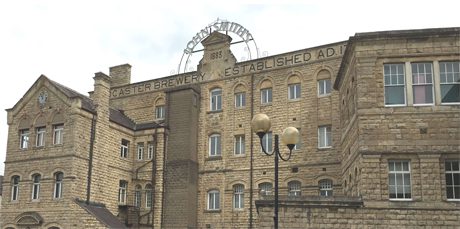This case study from Pollution & Process Monitoring looks at the issues surrounding the decision to use its Protoc TOC analysers at a well known brewery.
The Heineken-John Smith’s Brewery located in Tadcaster uses eight Protoc TOC analysers to monitor key effluent streams and proactively manage site effluent. After ten years of continuous operation, the instruments are still performing reliably and are an integral part of the company’s system for ensuring environmental compliance. The site has used the Protoc analysers to gain a better understanding of upstream processes and reduce the load entering the on-site treatment facility. Improved measurement and control has improved effluent quality and reduced operational costs.

The selection process
In September 2004 the brewery was investigating possible ways of monitoring effluent quality and identifying product loss. They approached instrumentation expert Pollution & Process Monitoring to discuss their requirements and design a suitable monitoring solution. To simplify the delivery of the project, the project manager at John Smith’s wanted a complete turnkey package from a single supplier. The specification included a number of reliable on-line analytical instruments, some pre-installed onto back-panels and others within walk-in GRP kiosks, complete with lighting, heating, sample delivery, sample preparation and preformed sample pipe-work. On-going service support was also deemed a priority.

Analyser reliability was also a critical consideration. The project manager contacted a number of producers in the food and beverage sector which already had the Protoc analyser technology installed, to establish the instrumentation’s suitability for the brewing industry and that these instruments were properly supported. After receiving positive feedback, John Smith’s asked PPM to attend site, make recommendations and prepare a monitoring proposal.
Choice of locations
After conducting a site survey to evaluate possible monitoring locations across the drainage system, PPM identified seven key locations where monitoring could play a role in pinpointing production issues and improving effluent quality, which were:
– Beer destruction
– Brewhouse
– Filtration
– Kegging
– Canning
– Bottling
– Fermentation
The final installation of the Protoc analyser technology was completed in March 2005.
Around this time, plans for expansion of the brewery were underway. However, the local Yorkshire Water treatment plant was not capable of handling any further load from the proposed expansion. So John Smith’s decided to build an on-site effluent treatment plant, after which the Protoc analyser technology then played a key role in controlling the load entering the treatment facility and ultimately ensuring compliance with the discharge consent then in place.

The brewery is now part of the Heineken Group and the site utilities operator, Vinny Empsall, oversees the operation of the PPM instrumentation. He says: “The Protoc TOC monitors still play an important part in the brewery’s operation, [and] any potential anomalies such as a leaking valve from the brewhouse are quickly identified by the instruments”.

Since making the installation there has been a large reduction in effluent load, reducing the demands on the effluent treatment plant with a significant reduction in associated energy use and operation costs. The analysers provide a comprehensive picture of effluent quality from key production areas, says PPM, which is summarised in a weekly report, circulated to all key personnel.
Empsall commented: “The auto-zero and calibration feature ensures the monitors are self-checking, giving confidence in the results we are seeing. This is an important feature.” After more than 10 years operation, Heineken has recently replaced one of the original TOC analysers and relocated the instrument to an outdoor kiosk, for improved access and weather protection. Since making the initial installation, Heineken has also added an eighth monitoring location: A further Protoc analyser was installed to provide continuous measurement in the Brewery yard to monitor the surface water discharge to a local water course to ensure rainwater collected in this area was free of contamination.






